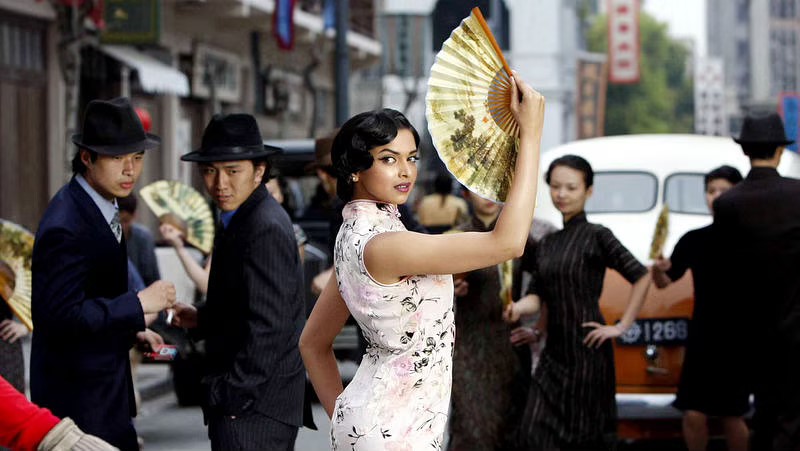Much like the dal spilled on the steps of the Great Wall of China during the shooting of Chandni Chowk to China (2009), the influence of Bollywood has spilled over the borders of India and brought its culture to the screens of people all over the world. From the unprecedented success of Dangal in the Chinese box office to the launch of a Bollywood-themed amusement park in Dubai, it is no secret that the industry has become a central aspect of India’s soft power.
However, the multi-billion dollar industry does a lot more than just project the nation’s cultural identity beyond the Indian Ocean. For decades, Bollywood movies have also served as a unique reflection of India’s relationship with other foreign countries – enemies and allies alike. As these relations evolved over years of conflict and cooperation, the manner in which these countries are represented in Bollywood films has also evolved.
One such nation with which India has had a very tumultuous history is Pakistan. Films that were released during critical periods in the past have played an important role in shaping and solidifying the popular narrative in India surrounding its less-than-friendly neighbour. Movies about Pakistan made in the late 20th century mostly portrayed the nation as being inherently hostile towards Indians, reflecting the negative rhetoric that developed due to the multiple wars that the two nations fought during that time. As the conflict between the two nations grew in intensity, the industry churned out film after film that depicted Pakistani soldiers suffering a brutal defeat at the hands of the Indian forces. Movies such as Border (1997) and Sarfarosh (1999) (released during the Kargil War) were popular for their elements of jingoistic nationalism – with Pakistani characters written as treacherous cowards who existed solely to ensure the downfall of the Great Indian Hero, played by beloved Bollywood actors. As Indo-Pak relations began softening around the early 2000s, so did the violent characterization of Pakistan in the films of that era. As India began rebuilding its ties with Pakistan in the aftermath of the Kargil war, movies like Main Hoon Na (2004) that focused on themes of unity and cooperation with Pakistan were widely accepted by the public. However, just like the fragile peace agreements between the two countries, this amiable perception of Pakistan in Bollywood films did not last very long. In the movies released after the Mumbai terror attacks in 2008, there was an increasing urge to conflate Pakistan, Islam, and terrorism. As seen in the recent blockbuster hit Uri: The Surgical Strike (2019), this rhetoric remains popular among audiences to this day.
India’s disputatious foreign relations do not end with Pakistan, for its past with China is also just as complicated. After the 1962 Sino-Indian War, the film Haqeeqat (1964) which dramatized the events of the conflict reinforced the perception of the Chinese as deceitful invaders, leaving no room for nuance. However, after the two nations signed a peace treaty, the Censor Board prevented Bollywood’s filmmakers from portraying China in a bad light. Subsequent films that used Chinese settings or featured Chinese characters resorted to depicting them as cartoonish sidekicks, like in Nikhil Advani’s Chandni Chowk to China (2009). Despite these efforts, the image of China as a threat to India’s interests that was popularized by Haqeeqat remains in the minds of Indian audiences, as evidenced by a 2016 survey that found that nearly 70% of Indians were concerned about China’s growing military power.
The only foreign countries that have been consistently depicted in a favorable light in Bollywood cinema are those in the West. The United States and Europe became a source of fascination for Indian cinemagoers thanks to some of Bollywood’s biggest box office hits that were filmed abroad. In fact, the impact of Bollywood on tourism in these countries was so significant that India has negotiated trade deals with North American and European countries that provide cash grants and tax credits to Indian films that satisfy certain criteria such as the use of local talent. Films such as Kabhi Khushi Kabhi Gham (2001) portrayed the dreams of modern Indian middle-class families to live a luxurious life abroad, while still highlighting the moral superiority of the strong familial ties that define Indian society. Their message reflected India’s increased focus on maintaining its distinct cultural identity as it steamed ahead on the path of globalization.
As India grows into a global superpower, the intricate relationship between the nation’s foreign policy and its cinematic representation is more important now than ever before. Considering the ever-expanding reach of the Indian film industry, its portrayal of India’s closest allies and oldest enemies have the potential to define the future of these relationships. Thus, it is safe to say that the future of India’s foreign affairs will be shaped at both the diplomat’s desk and the table read for the next big Bollywood film.
Sagara Ann Johny is a second-year student at Ashoka University majoring in Economics and Finance.

